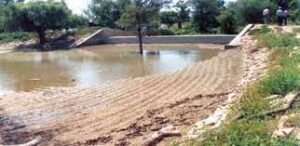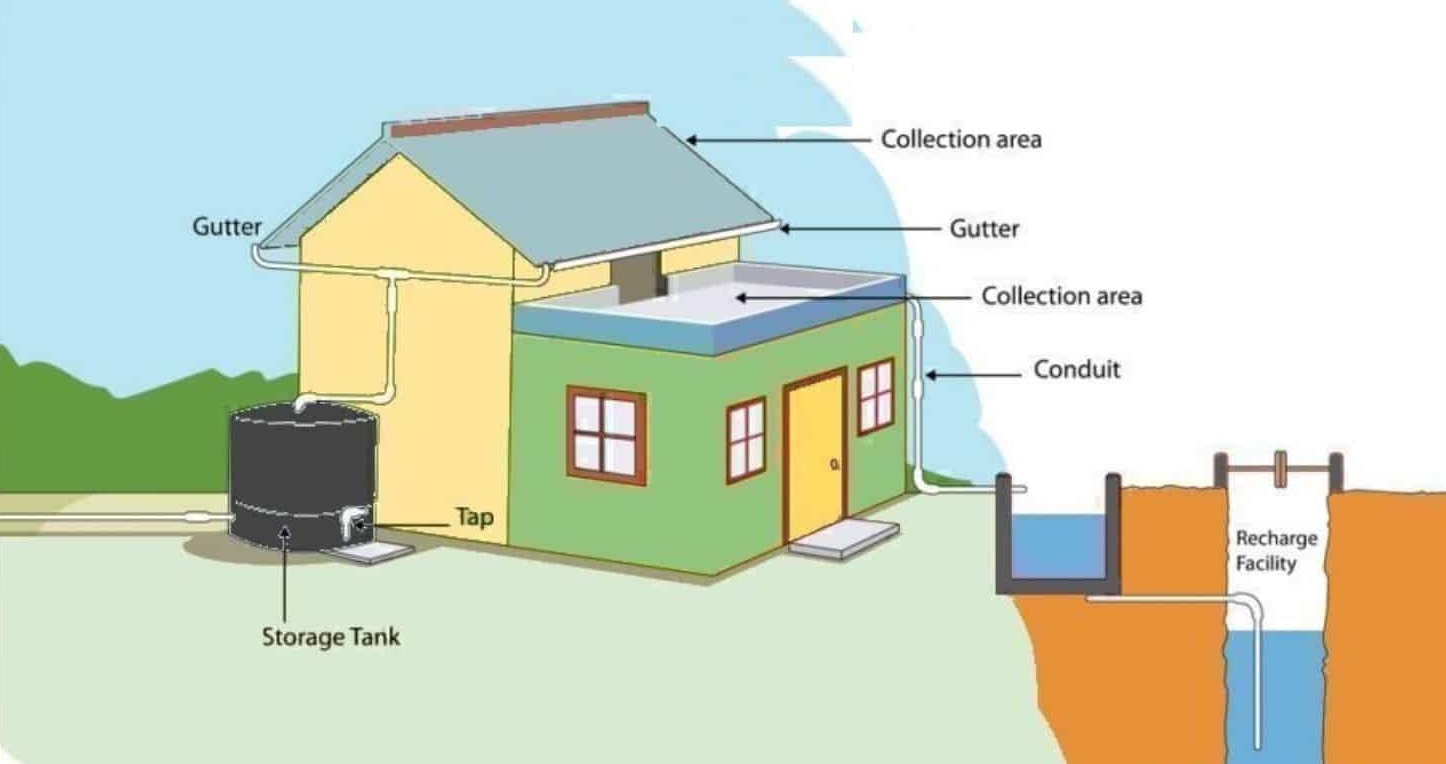Class 10 Geography – Water Resources worksheet with solutions is prepared for extensive learning. You can go through and practice the given water resources worksheet to score more marks in your CBSE board exams. This worksheet on water resources contains many questions from the chapter on water resources that are asked in class 10 board exams. It will also help the students to get an idea of the type of questions asked in the chapter on water resources. By going through this Geography worksheet on water resources, you will also get an idea about How To Write Perfect Answers In Points
Forests and Wildlife Resources – Class X Notes With 1,3 & 5 Mark Questions
NCERT Chapter 3 Class 10 Water Resources Worksheet With Solutions
1 Mark Questions From Chapter 3 Water Resources
Question 1
Which is the major source of fresh water in India?
A. Snow-covered Himalayas
B. Rivers
C. Underground water
D. Precipitation
Question 2
Which is not a major cause of water scarcity?
A. Growth of Population
B. Commercial Farming
C. Taking a bath in a river
D. Industrialisation
Question 3
What kind of resource is water?
A. Renewable
B. Biotic
C. Stock
D. Reserve
Question 4
How much of the world’s water exists as fresh water?
A. 1 %
B. 1.5 %
C. 2 %
D 2.5 %
Question 5.
Who proclaimed dams as the “Temples of modern India”?
A. Mahatma Gandhi
B. Jawahar Lal Nehru
C. Atal Bihari Vajpayee
D. Indira Gandhi
Question 6
On which river Salal dam is built?
A. Indus
B. Satluj
C. Jhelum
D. Chenab
Question 7
What method was developed in the flood plains of Bengal to irrigate their fields?
A. Inundation Canals
B. Guls and Kuls
C. Khadins
D. Johads
Question 8.
Name the first and the only state in India which has made rooftop rainwater harvesting structures compulsory for all houses across the state?
A. Rajasthan
B. Tamilnadu
C. Karnataka
D. Meghalaya
Question 9
Meghalaya is a state with the heaviest rainfall in the world but still has water scarcity. What may be the reason?
A. Overutilization of water
B. Over Population
C. Run off of water
D. Bamboo drip irrigation
Question 10
Which one of the following is not a disadvantage of a dam?
A. Inland navigation
B. Sedimentation of the reservoir
C. Submergence of land
D. Stops migration of aquatic animals.
SOLUTIONS:
- C. Underground water 2. C. Taking a bath in a river 3. A. Renewable 4. D 2.5 % 5. B. Jawahar Lal Nehru 6. D. Chenab 7. A. Inundation Canals 8. B. Tamilnadu 9. C. Run off of water 10. A. Inland navigation
17 National Symbols Of India Which Every Indian Must Know
NCERT Chapter 3 Class 10 Water Resources Worksheet With Solutions
1 Mark Questions From Chapter 3 Water Resources
Fill in the blanks:
Question 11
_________________ village in Mysore (Karnataka) has a major population with installed rooftop rainwater harvesting?
(select from the options given below)
A. Chilkunda
B. Gendathur
C. Chikmaglur
D. Bellary
Answer: B. Gendathur
Question 12
________________ was the primary reason for launching “Narmada Bachao Andolan”?
A. Displacement of people
B. Sedimentation of the reservoir
C. Submergence of land
D. Stops migration of aquatic animals.
Answer: A. Displacement of people
Question 13
Complete the following table related to the multipurpose project
Multipurpose Project | River | Movement |
Sardar Sarovar Dam | (a) ? | (b) ? |
Answer: (a) River Narmada (b) Narmada Bachao Andolan
Question 14
Complete the following table related to dams built on rivers
Multipurpose Project | Name of the river |
Hirakud Dam | Mahanadi |
Mettur Dam | Kaveri |
Nagarjun Sagar Dam | (?) |
Tehri Dam | Ganga |
Answer: River Krishna
1 Mark Picture-Based Questions
Question 15
Look at the picture given below and Identify the technique of water conservation. Also, mention the state where it is practiced in India.

Image Courtesy: NCERT Text Book
Answer: Bamboo Drip Irrigation, In the state of Meghalaya
Question 16
Identify the water harvesting system by looking at the given picture.

Image courtesy: Krishi ICAR
Answer: Khadins (a traditional rainwater harvesting system in Rajasthan)
NCERT Chapter 3 Class 10 Water Resources Worksheet With Solutions
3 Mark Questions From Chapter 3 Water Resources
Question 17
“Water scarcity may be an outcome of a large and growing population in India.” Analyze the statement.
Answer
Water scarcity may be an outcome of a large and growing population in India. This can be analyzed as
i) After independence, India witnessed intensive Industrialization and Urbanisation.
This increased the use and demand for water.
ii) Rapid growth of population leads to over-exploitation of water for domestic and agricultural use.
iii) Dense population in the urban areas with an urban lifestyle has further aggravated the problem of water scarcity.
Question 18
Is it possible that an area or region may have ample water resources but is still facing scarcity? Comment.
Answer
Yes, it is possible that an area or region may have ample water resources but is still facing scarcity. They are:
i) Cities and urban areas may have ample amounts of water but due to domestic and industrial wastes, it is possible that sources are polluted. This can lead to scarcity of water.
ii) With the increase in population and growing demand for food crops, farmers have their own wells and tube wells. This has resulted in a decrease in the underground water level and is one of the factors for water scarcity.
iii) Places with ample water resources also attract industries. As we know that industries need huge amounts of water, which can easily create pressure on water resources.
3 Mark Questions From Chapter 3 Water Resources
Question 19
Do you think that the traditional harvesting system is useful to conserve and store water? Highlight the importance of this system with relevant examples.
Answer:
Yes, I think that the traditional harvesting system is useful to conserve and store water. Following are examples of rainwater harvesting systems practiced in India:
i) In Rajasthan, Johads and Khadins are the two traditional ways of storing rainwater.
Apart from this they also use underground tanks for storing rooftop rainwater for domestic use.
ii) Similarly, in Himachal Pradesh, people have made diversion channels known as “Guls” and “Kuls” for storing water for irrigation.
iii) In West Bengal, people have made inundation canals whereas in Meghalaya people use Bamboo drip irrigation to irrigate their crops.
All these traditional methods of harvesting have helped in the conservation and storing of water.
Question 20
What lessons can we learn from Gendathur village?
OR
What example is set by Gendathur village?
Answer:
The poor and uneducated villagers of Gendathur village have set such a beautiful example that every so-called educated and political leader should be ashamed of. The leaders of India invest a vast amount to resolve a problem that is never resolved. The lessons we can learn from Gendathur village are:
i) Rainwater collection systems installed on rooftops are used by about 200 homes. The community has the remarkable distinction of being rich in rainwater as a result of this.
ii) People have sufficient water to meet their daily requirements. Due to this, the river water is clean and intoxicated.
iii) The people of Gendathur village use tanks to collect rainwater and uses 1,00,000 liters of water annually.
Class X Term 1 Agriculture – MCQ’s As Per New Rationalized Syllabus 2022-23
3 Mark Questions From Chapter 3 Water Resources
Question 21
What is water scarcity? Analyze the impact of water scarcity.
Answer
The shortage of water as compared to its demand is known as water scarcity.
The impact of water scarcity is as follows:
i) There can be an acute shortage of drinking water for humans, plants, and animals. Shortage of clean and safe drinking water can create various health problems.
ii) Scarcity of water can adversely affect agricultural production which can lead to food insecurity.
iii) Further, a Shortage of water means less generation of Hydroelectricity which then reduces industrial output.
Question 22
Do you think multi-purpose projects have failed to achieve the purpose for which they were built? Justify your answer in three points.
Answer:
Yes, the multi-purpose projects as the name suggests have failed to achieve the purpose for which they were built. The following are the reasons for the same:
i) These projects were constructed to control floods but it has been seen that due to excessive sedimentation at the bottom of the reservoir, it increases the intensity of floods.
ii) Multi-purpose river valley projects were constructed to facilitate the people. But, it actually led to the displacement of local people and has caused inter-state disputes.
iii) These projects also cause destruction of the environment due to deforestation, submergence of fertile land, and stopping the natural flow of rivers.
NCERT Chapter 3 Class 10 Water Resources Worksheet With Solutions
5 Mark Questions From Chapter 3 Water Resources
Question 23
Explain any five reasons for water pollution in India?
Answer:
FIve reasons for water pollution in India are:
i) Discharge of industrial wastes directly into the rivers, ponds, or lakes without treating them has caused water pollution.
ii) Modern agricultural practices use chemicals, fertilizers, and pesticides which ultimately flow into the rivers or seep into groundwater which causes water pollution.
iii) In urban areas, most of the water used is drained out through municipal drains which causes water pollution.
iv) Oil spills also cause water pollution in rivers, seas, and oceans.
v) Dumping of wastes on land including nuclear wastes is further carried into the rivers due to rain which ultimately causes water pollution.
Source Based Questions From Chapter 3 Water Resources
Read the extract and answer the questions that follow.
Multi-purpose projects and large dams have also been the cause of many new social movements. Resistance to these projects has primarily been due to the large-scale displacement of local communities. Local people often had to give up their land, livelihood, and their meager access and control over resources for the greater good of the nation. So, if the local people are not benefiting from such projects then who is benefited? Perhaps, the landowners and large farmers, industrialists, and few urban centers. Take the case of the landless in a village – does he really gain from such a project?
Irrigation has also changed the cropping pattern of many regions with farmers shifting to water-intensive and commercial crops. At the same time, it has transformed the social landscape i.e. increasing the social gap between the richer landowners and the landless poor. As we can see, the dams did create conflicts between people wanting different uses and benefits from the same water resources. In Gujarat, the Sabarmati-basin farmers were agitated and almost caused a riot over the higher priority given to water supply in urban areas, particularly during droughts. Inter-state water disputes are also becoming common with regard to sharing the costs and benefits of the multi-purpose project. (Source: NCERT Text Book)
A Project On Traditional Rainwater Harvesting in India: Preserving a Sustainable Water Source
Question 24
i) Name any two social movements caused due to multi-purpose projects and large dams?
ii) Who do you think are getting benefits from these multi-purpose projects and large dams?
iii) Mention any one consequence of a change in cropping pattern by the farmers.
iv) Mention any two disadvantages of a dam.
v) What causes Inter-state water disputes?
Answers:
i) Narmada Bachao Andolan and Tehri Dam Andolan टेहरी बाँध : खतरा सर पर
ii) The landowners, large farmers, and industrialists.
iii) Salinisation of the soil.
iv) Displacement of people and Submergence of land.
v) sharing the costs and benefits of the multi-purpose project
NCERT Chapter 3 Class 10 Water Resources Worksheet With Solutions
Conclusion:
Class X Water Resources worksheet has a total of 24 questions. All the questions are selected and important. Water resources were the deleted chapter last year but this year it is very much in the syllabus. Here, in this worksheet, we have tried to cover the entire chapter. This worksheet will also help you to prepare for NTSE and other competitive exams.
You may be interested in:
Resources and Development – Term I Questions and Answers
A Project On Traditional Rainwater Harvesting in India: Preserving a Sustainable Water Source





0 Comments